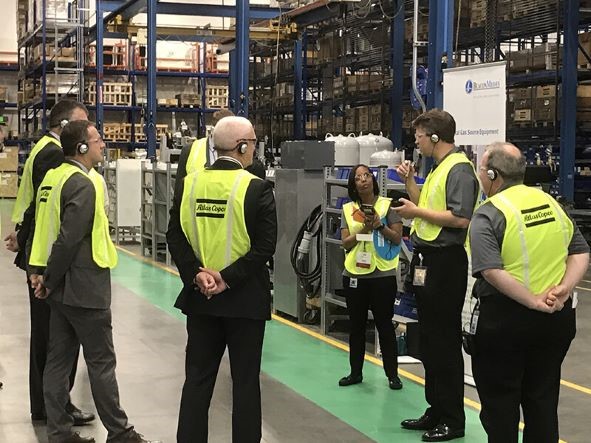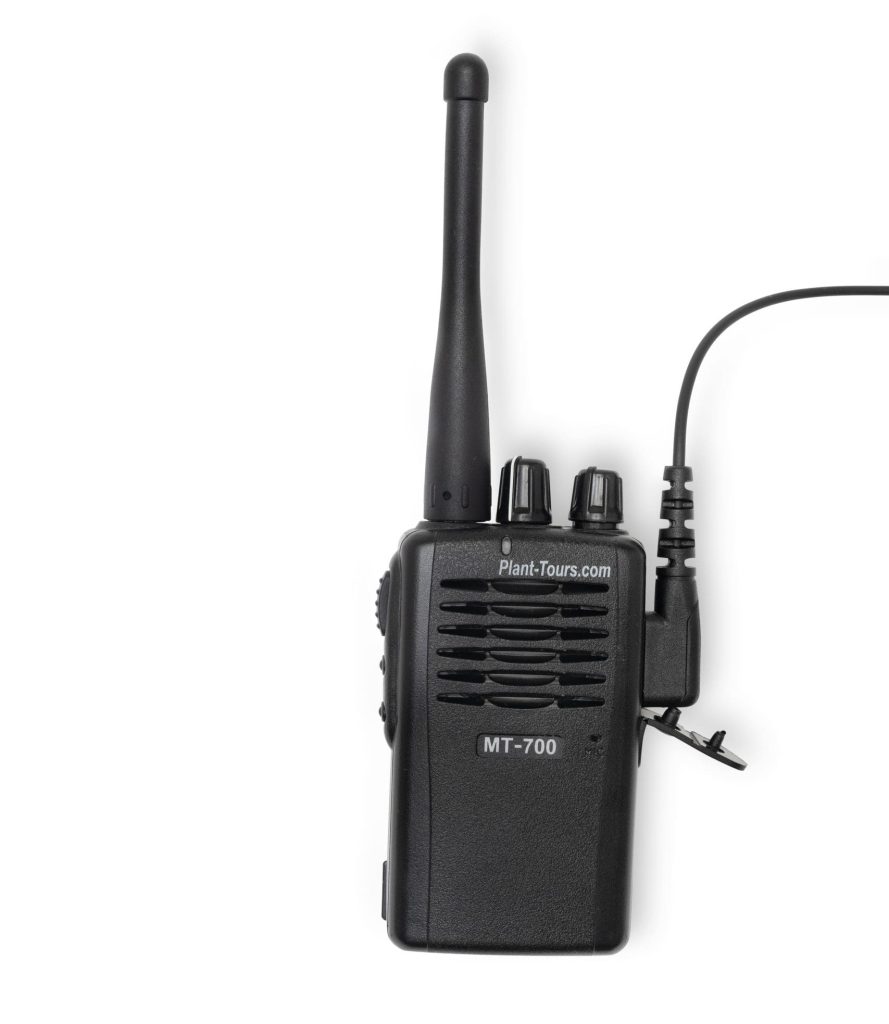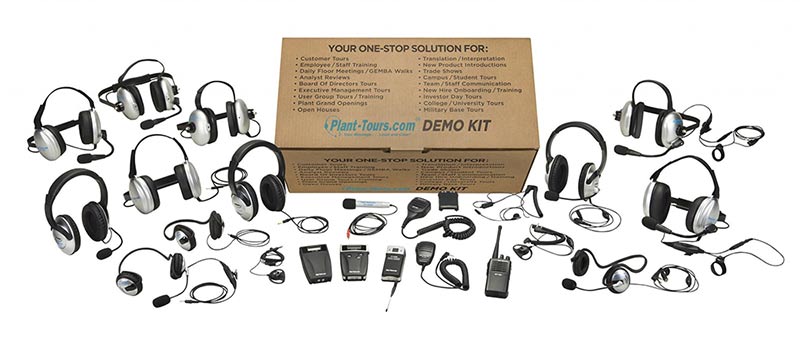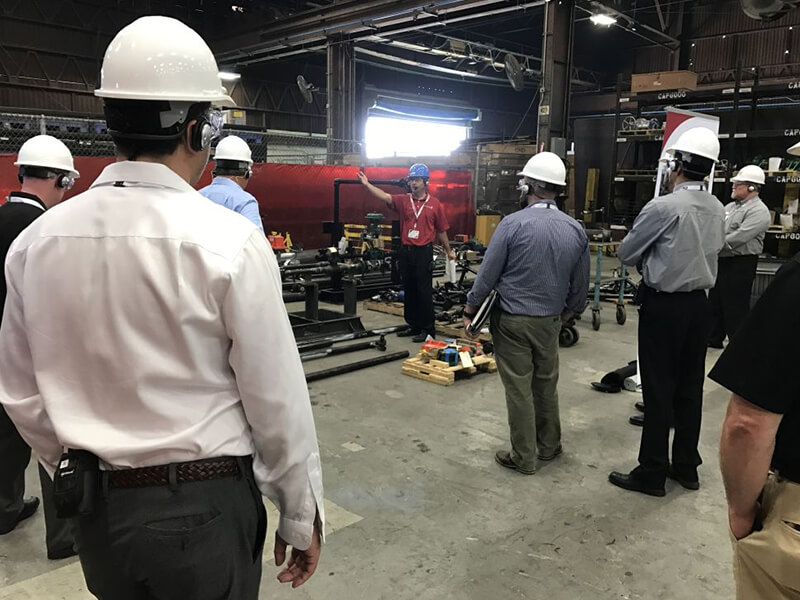Good communication is crucial in manufacturing and warehousing facilities due to the use of heavy machinery, obvious safety issues, and of course, typically high levels of background noise which often make normal conversation difficult. Going back to 2005, my experience with brands such as Coca-Cola, Ford, Nestle, and Amazon, has made it abundantly clear that effective warehouse communication is often the linchpin holding together complex and time-critical operations.
For industrial professionals seeking to enhance safety and productivity in their warehousing facilities, this guide will detail why effective communication is particularly important in a warehousing environment, and how the right technology can streamline operations by offering proven real-world solutions.
It should be noted that implementing a site communications protocol and the effective training of all staff is an important part of any overall communication strategy, but this guide will focus mainly on the use of technology – particularly headsets and the communications equipment that connects them.
What you’ll learn:







- Why effective communication is important in warehouses
- Common barriers to effective communication
- Tips to improve communication
- The role of technology in making improvements
The Importance of Effective Warehouse Communication
In the heart of every modern facility, communication is the lifeblood that keeps the operations flowing smoothly, safely, and efficiently.
Streamlining warehouse operations
Imagine the chaos of an orchestra without a conductor – effective communication acts as that conductor, coordinating the movements of machines, materials, and manpower on the warehouse floor. What sort of impact could it have on streamlining warehouse operations? Many of our customers tell me that our products have swiftly boosted their staff productivity levels. In fact, some have experienced a 30% reduction in downtime simply by improving communication between team members.Enhancing safety
If you have worked in the manufacturing and warehousing industry for any length of time you will no doubt be aware of some of the horror stories regarding industrial accidents. Poor communication is often cited as a contributing factor if not the actual cause of many accidents, so improving communication should form the first line of defense. The positive impact on safety due to good communication equipment and the right training is now widely accepted in the warehousing industry. Our clients know from first-hand experience that this is an effective method to reduce accidents and costly inventory mistakes for a relatively modest investment.
Employee relations
Though many companies focus on the impact communication technology can have on production and efficiency, it would be a mistake not to consider the very real benefits regarding employee relations. As warehouse operations grow in scale, there is an increasing tendency for employees to feel disconnected. The feedback we receive from clients is that good information flow powered by the right technology helps to improve morale.Customer Acquisition
Warehousing operations will typically use guided tours with Q&A as part of their customer acquisition strategy and a good first impression is vitally important. Prospective clients will feel distinctly unimpressed if they can’t hear the presentation due to high noise levels, and can’t ask questions because their headsets are not suitable/function properly for warehouse use. Unfortunately, we have heard more than a few embarrassing stories about mishaps with potential VIP clients during tours due to poor quality or unsuitable communications equipment before customers chose to use our communication systems instead. <
Common Communications Challenges in Warehouses
Most communication problems in warehouse environments are caused by a combination of high ambient noise and the often-larger distances between staff. Drawing from our clients’ experiences, the most common challenges faced in warehouse communication include:BACKGROUND NOISE
Warehouses can be incredibly noisy environments, and this can make it difficult for staff to communicate effectively using basic headsets without noise-canceling capability. These poor-quality headsets can suffer from distortion and interference, creating distractions. At PlantTours, we offer a variety of superior noise-cancellation headsets to suit warehouse use and our customers report crystal-clear audio.DISTANCE
Warehouses nowadays often exemplify extremely large facilities with workers spread out some distance from each other. Headsets can help with communication, but the range of typical budget radio equipment is limited, meaning workers may still struggle to communicate. This is an issue we hear about a lot when helping new customers choose the correct headset/transceiver combination. However, PlantTours’ two-way systems can provide clear conversation between workers at a distance of nearly half a mile.CONNECTIVITY ISSUES
Cheaper headsets not designed for large-scale manufacturing or warehousing sites can suffer from connectivity issues and interference from other devices. But this can be resolved by choosing a transceiver with multiple channels and pre-programmed private line codes. Our Plant Tours MT-700 system has worked well for many of our customers and offers 15 channels with private line codes to eliminate interference in even the busiest work areas.
COMFORT
Headsets often need to be worn for long periods of time and poorly designed models can become uncomfortable making workers reluctant to use them consistently. If workers remove their headsets or become distracted by adjusting it for greater comfort, they may miscommunicate. Many of our clients have reported that their staff find lightweight headsets such as our MT-200 to be supremely comfortable even over long shifts.
STRATEGIES FOR EFFECTIVE WAREHOUSE COMMUNICATION
Now that we’ve identified some common problems, let’s take a look at some actionable real-life strategies in terms of proven technology solutions that have been successfully implemented to improve warehouse efficiency:Harnessing the Power of Communication Headsets
Communication headsets are no longer just something you see in call centers; they can be a complete game-changer on the warehouse floor. Headsets for manufacturing plants and warehouses are interactive with noise-canceling technology and are a well-proven method to improve communication. I’ve been in countless warehouse settings where the incessant background noise makes traditional walkie-talkies and public address systems virtually useless. Instructions are often drowned out, key points are missed or misunderstood, and warnings go unheeded. This has obvious adverse effects on productivity and safety. I have witnessed many times that when customers switch to modern noise-canceling headsets, there has been a complete revelation with near-instant improvements. The idea that tours and training in a noisy warehouse environment can be seamlessly conducted without specialized equipment is seriously flawed. In my experience, the near-constant noise and bustle can often drown out crucial instructions and explanations, making training sessions or tours incredibly challenging for trainers and guides. Not to mention, it often leaves guests and trainees feeling completely frustrated. Introducing our range of interactive, two-way communication headsets suitable for warehouse use for our clients, has made a world of difference.
Embracing Real-Time Mobile Solutions
Mobile devices such as smartphones and tablets are useful for communicating a certain level of information in a modern warehouse facility. However, most operations teams we have worked with concur that the most effective warehouse communication should always involve the exchange of information via two-way radios between all stakeholders, including management, supervisors, team leaders, and frontline workers on the warehouse floor.







